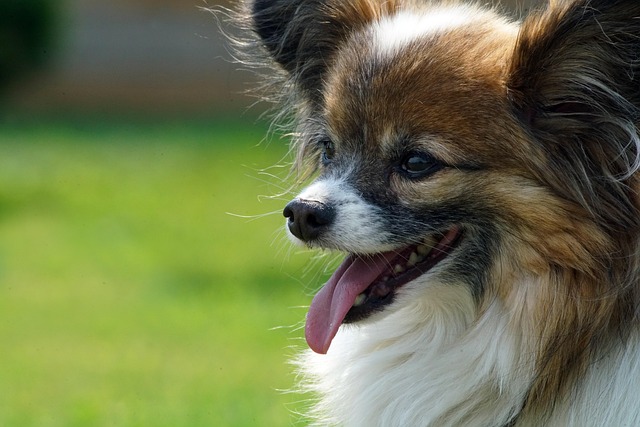
How can I tell if my dog's heatstroke is serious
Let’s be real: It’s a sticky August morning in Los Angeles, and you took your 2-year-old Golden Retriever, Max, for a walk a little later than usual
If you’re a new dog parent in the US—maybe you just brought home a wiggly Lab puppy or a cuddly senior Shih Tzu—you’ve probably noticed little signs like stinky breath or your dog pulling away when you touch their mouth. Here’s the good news: Dental disease (the #1 oral issue for dogs here) isn’t inevitable. With simple daily habits, you can keep their teeth clean and gums healthy—and it all ties into how we care for dogs in America, from local rules to happy routines.
Let’s start with the basics: Dental disease starts with plaque, that sticky film on teeth after meals (just like in humans!). Skip brushing, and it hardens into tartar in 3 days—tartar irritates gums first (gingivitis) and then creeps under them to attack tooth roots (periodontitis). My neighbor in Seattle learned this the hard way: Her Corgi, Max, had bad breath for months, and by the vet visit, he needed a tooth pulled. The vet said if she’d brushed even 3 times a week, they could’ve avoided it. So prevention is all about stopping plaque before it turns into something worse.
The most important step? Daily brushing—but forget the stress! Use a dog-specific toothbrush (small heads work for Chihuahuas; longer ones for Goldens) and chicken or beef-flavored toothpaste (human toothpaste has toxic fluoride). My cousin in California trains her Beagle by giving a tiny peanut butter treat (unsalted!) after brushing. Now he sits still because he knows a reward’s coming—no yanking or scolding. Keep it short: 30 seconds per side is enough for most dogs. If your pup resists at first, start with just touching their mouth, then add the brush slowly—positive reinforcement beats frustration every time.

Next, add weekly helpers. Grab dental chews with the VOHC seal (vets across the US recommend this—look for the logo on packages!)—they scrape plaque while your dog chews. For apartment dwellers (like my NYC friend with a Pomeranian), mix a spoonful of unsweetened coconut oil into kibble—its natural fats soften tartar, and it’s easy to serve without making a mess. And never skip vet checkups: Most US vets include a free dental exam with routine visits (like updating rabies shots, which are required in every state by 4 months old). This isn’t just compliance—it’s how you catch early plaque before you see symptoms.
Now, tie this to daily life and rules. When you’re out walking (don’t forget poop bags—cities like Chicago fine $150+ for leaving waste!), watch what your dog chews. Sticks or rocks scratch teeth, making plaque stick easier—politely redirect them to a toy instead. In apartments, brush near the kitchen sink (easy to clean up drool!) instead of the living room, where TV noises distract them. And in hallways or elevators, avoid letting other dogs lick your pup’s face—saliva spreads bacteria that worsen gum issues, and it’s polite to ask owners first.
Culturally, remember: Never punish your dog for resisting dental care. Yelling or holding their muzzle tight breaks trust, and US animal welfare groups like the ASPCA stress calm, happy routines. Think of brushing as a bonding moment, not a chore—your dog will pick up on your vibe.
At the end of the day, preventing dental disease is about consistency, not perfection. A quick brush, a weekly chew, and regular vet checks will keep your dog’s smile bright—and their snuggles smell fresh. Your pup can’t tell you their mouth hurts, so it’s up to you to make dental care easy (and even fun!) for both of you.

Let’s be real: It’s a sticky August morning in Los Angeles, and you took your 2-year-old Golden Retriever, Max, for a walk a little later than usual

You're enjoying a summer afternoon at the park when you notice your dog has stopped panting and appears disoriented - their gums are bright red

Let’s paint the picture: You’re in your Denver apartment, watching your 4-year-old Boston Terrier, Ruby, plop down mid-play session with her favorite toy

Many dog owners notice their pets nails seem shorter after regular walks,but how much does this daily activity actually help?The answer depends on where you walk—concrete sidewalks or asphalt streets gently file nails as a dog's paws hit the ground

Most dog owners notice their pup scooting across the carpet at some point, but few connect it to impacted anal glands. These small sacs near a dog’s rectum secrete a scent for marking territory

Most vets agree that regular dog teeth cleaning is key to avoiding painful dental issues later. For healthy adult dogs, a professional cleaning at the vet’s office every 12 to 18 months usually works well.